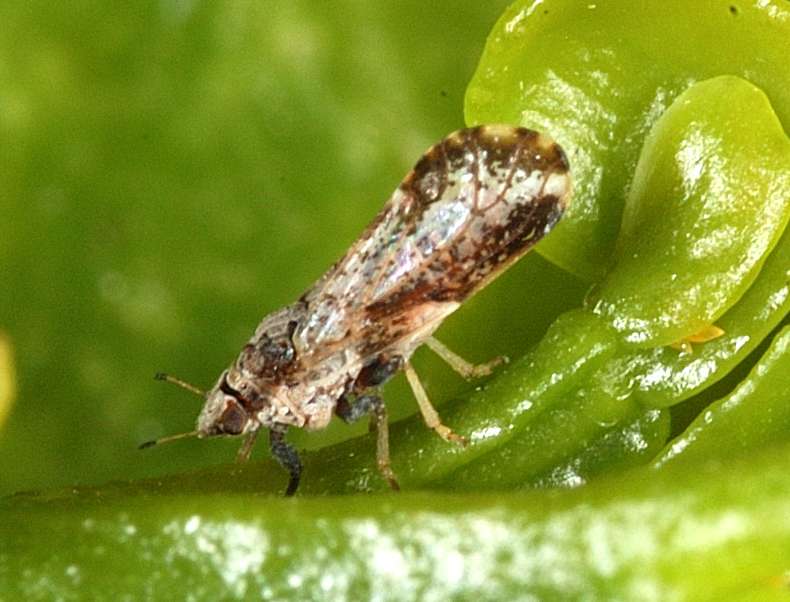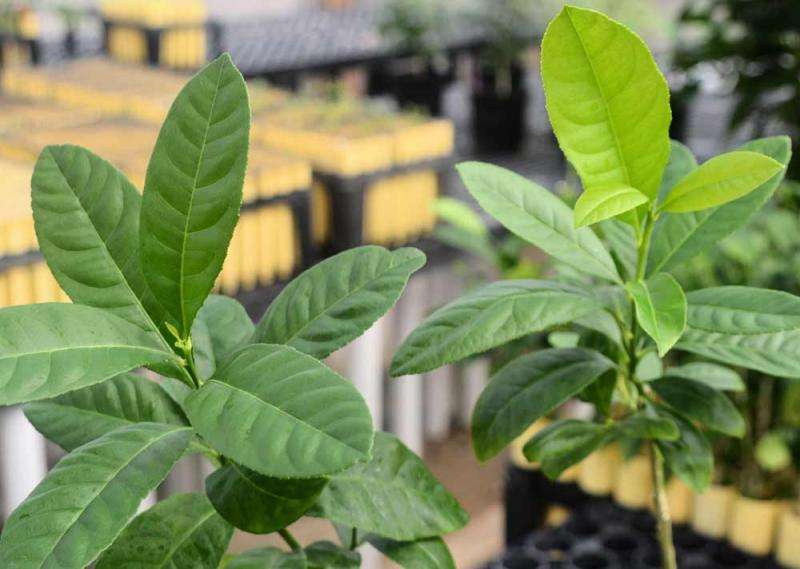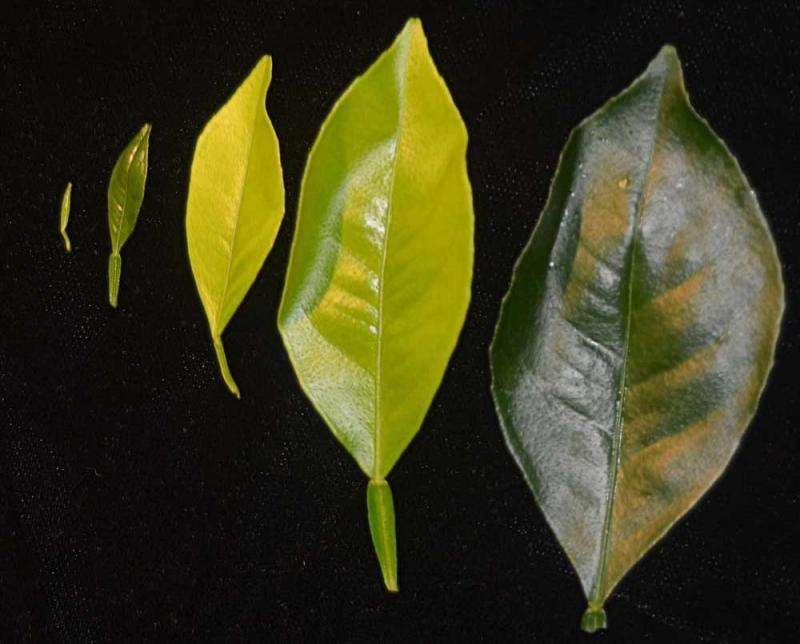Asian citrus psyllid (Diaphorina citri). Credit: David Hall, USDA-ARS
Citrus greening disease, also known as Asiatic huanglongbing (HLB), is spread by the Asian citrus psyllid (Diaphorina citri). The disease mars leaves, shrinks and turns fruit bitter, and eventually kills trees. So far incurable, it has cost the Florida citrus industry alone $1.3 billion.
Plant breeders who are trying to find citrus varieties that are resistant to the disease have been infecting trees in experiments to determine which ones might be likely candidates, and this research has led to a useful discovery. According to an article in the Journal of Economic Entomology , the best time to infect trees is during "flush," a stage in growth from the emergence of leaves until they expand to full size, but before they become thick and leathery.
The reproductive cycle of the psyllid is closely tied to flush, according to the authors, and so is the rate at which the psyllids infect citrus with the bacterium. This knowledge should useful to growers as well, because it means that pesticide applications are likely to be more effective during flush.
"Healthy citrus should be protected from ACP infestations throughout a flush," the authors wrote.
Finding the new approach to combating HLB was fortuitous, said lead Dr. David Hall of the U.S. Horticultural Research Laboratory, who presented his findings to Florida citrus growers at the end in January 2016.
The plant on the left has tiny, young flush towards the center. The plant on the right has fully-expanded, soft, light-green flush leaves on top. Both plants have mature, dark-green leaves below. Credit: David Hall, USDA-ARS
"We were looking for the best ways to test varieties for susceptibility," he said.
To do that, researchers need an efficient method of infecting experimental plants with the disease. Trees can be infected by hand via the grafting of infected shoots. But instead of such a labor-intensive procedure, Hall and his team opted to let the psyllids do the work for them, mimicking nature in the process.
Since the psyllid lays its eggs on emerging leaves, Hall and his partners decided to see if flush played a role in disease transmission and if it would impact experimental infection.
"I actually thought that it would not matter if flush was present," Hall said. "But I was wrong. We now know that our success in infecting plants will be much better if flush is present."
The first four leaves (left to right) show the progression of a flush from new tiny leaves to an almost fully expanded flush leaf. The leaf to the extreme right is a mature leaf. Credit: David Hall, USDA-ARS
More information: The full article, "Transmission Rates of 'Ca. Liberibacter asiaticus' by Asian Citrus Psyllid are enhanced by the Presence and Developmental Stage of Citrus Flush," is available at dx.doi.org/10.1093/jee/tow009
Journal information: Journal of Economic Entomology
Provided by Entomological Society of America
























